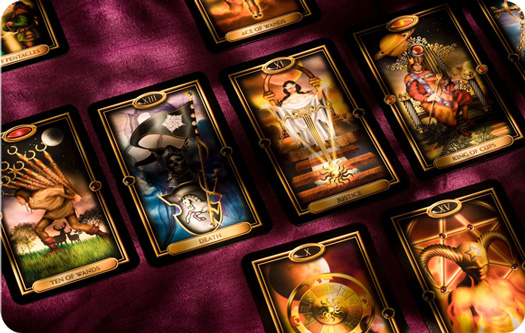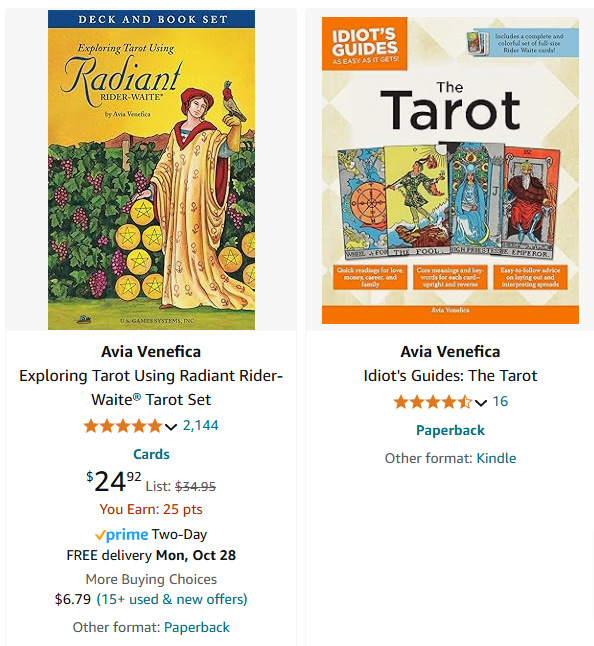Using cards for divinatory purposes has been going on as long as humans have been trying to get clarity about their lives or find answers to their problems. While the tarot has enjoyed a long history of use, a new trend has started to creep up in the spiritual marketplace. I’m talking about oracle cards. So what’s are the differences between tarot and oracle cards?
Firstly, we have Arthur Edward Waite, Pamela Colman Smith, and the Rider Company to thank for what is arguably the most standardized and popularized tarot deck known as the Rider-Waite (or Waite-Smith deck). This deck is the quintessential poster child of tarot decks. When you see images of tarot on the TV or if you’re a beginner, you’re probably coming face-to-face with the Rider-Waite Deck.
By comparison, oracle decks don’t have that kind of distinction or standardization. Oracle decks are certainly popular among spiritual practitioners or curious dabblers alike, but there are major distinctions and differences between tarot and oracles cards. Here are a few prime points that clearly separate tarot and oracle decks.
Using tarot cards is a great way to augment spiritual practices, and oracle cards can have equally beneficial results. But what if you’re not sure which type of deck to use? Read further to determine the differences between tarot and oracle cards so you can make the right choice that suits your needs.
Structure Versus Anything Goes
The first main difference between tarot and oracle cards is that tarot cards are usually more structured. Most tarot decks are at least close to the original Rider-Waite deck, with about 78 cards, and all the original minor and major arcanas.
Tarot decks wildly. There are also 1000s of different decks. If you’ve taken a look at tarot decks on Amazon, you’ve probably been gobsmacked by all the virtually endless array of designs and subject matter. From baseball tarot, cat-lovers tarot or even a clown-centric tarot decks – there’s no limit to what you might find.
In spite of all this variety, all tarot decks stick to the same 78-card structure with four suits and a major arcana. Sure, some tarot deck suits vary slightly like coins instead of pentacles, or staves or rods instead of wands, but the meanings are there.
With oracle cards, anything goes. They can be any design, color, size, shape, and meaning. Furthermore, oracle decks do not have the standardized 78 cards. There can be any number of cards in an oracle deck. Each oracle deck is different not just in how they look and the imagery, but the meaning of each oracle card.
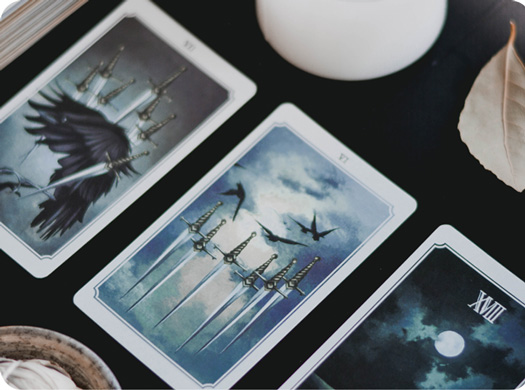
Size, Shape, and Imagery of the Cards
This can be another qualifier among the differences between tarot and oracle cards. While some are slightly larger or smaller, most tarot cards are rectangular and roughly the same size. With oracle cards, there is a lot more variety. You can often find different shapes, like square, round, or heart-shaped cards.
Furthermore, the imagery of oracle cards versus tarot cards greatly differs. With a tarot deck, you’re should see some version of kings, queens, knights, pages, cups, swords, pentacles, and wands. No matter what the subject matter of the tarot deck is, the artist will typically follow those general guidelines. Although some artwork in tarot decks can get way ‘out-of-the-box’ – you can still see hints of the original tarot structure.
Oracle card imagery does not follow such a structure. The images on the cards will follow the subject matter of the oracle deck. For example, if you get an angel oracle deck, you’re likely going to see angelic imagery. If you look at an animal totem deck, then the pictures on the cards will obviously be critter-specific.
Differences in Reading Tarot and Oracle Cards
I get a lot of feedback from newcomers to the tarot about how challenging it might be to read and interpret all the dizzying symbols in the 78-card deck. That’s fair. When I was introduced to the tarot thirty years ago, I was slightly intimidated. However, I was already digging on symbols and symbolic meanings, so the tarot came a little easier to me. But I still understand how all the suits and symbols can get overwhelming.
This is why oracle decks have soared in popularity. There is no memorization of intricate symbolism involved. Oracle cards are designed to easily engage with the reader through visual stimulation. As a result, oracle decks are a first choice for those developing intuition, or for folks who might be put off by the sometimes stodginess of tarot cards.
Differences in Understanding Interpretations
Divinatory practitioners (amateur or veteran) also have the luxury of getting clear definitions with oracle cards. Very often, oracle cards will have a sentence or bi-line that provides a clear definition of the card. This makes it easier to assess a situation.
On the other hand, most tarot cards do not have this advantage. Card readers must rely on their knowledge and experience to determine the meaning of the card and apply it to the situation at hand. If you’re a beginner, you might look into getting a tarot card app to help you remember card meanings and help with readings spreads.
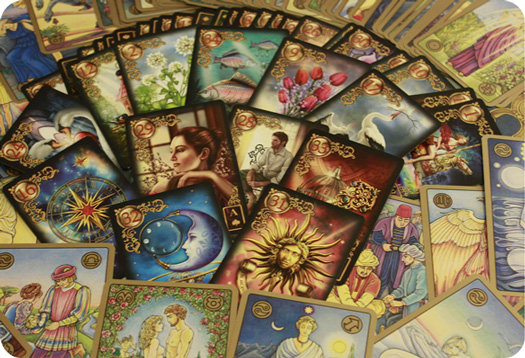
Can You Use Both Tarot and Oracle Cards Together?
My philosophy about the differences between tarot and oracle cards is that variety is the spice of life. So, the simple answer to this question is, “yes.” But (of course) I’ve got a long answer too.
I wouldn’t recommend mixing up decks (oracle and tarot combined) if you’re new to the idea of using cards for divination, forecasting, or self-development. If you are just dipping your toes into the realm of using cards for predictive or self-improvement purposes, I suggest sticking with a deck (oracle or tarot) you’re comfortable with.
As you grow in your knowledge, comfort, and experience, that’s a great time to introduce different decks. For instance, if you started with a traditional Rider-Waite deck, and want to elaborate on a tarot reading, feel free to pull a card from an oracle deck to gain more clarity about the tarot spread.
I do this often in my reading with clients. I start with my favorite tarot deck (my old standby, the Morgan-Greer deck). If there is a hiccup in my giddy-up during reading, I’ll pull from one of my oracle decks (I love the Tao Oracle deck). This just kinda illuminates a reading. In my experience, pulling an oracle card on top of a tarot spread can also serve as a confirmation.
Final Thoughts About Oracle Cards Versus Tarot Cards
As you might have guessed, my advice about which deck to choose ultimately boils down to you and your preferences. Both types of decks definitely have their place, purpose, and appropriate moments for use.
That said, please be sure to put yourself in the right mindset and soul-set before conducting readings – no matter which deck you choose. Reading cards isn’t like playing poker or laughing over a round of Uno. Conducting a tarot or oracle reading should be reverent. I’m not trying to be a wet blanket here, but this is not a giggly, fluffy activity.
There is big energy and gravity to tarot readings. We’re talking about powerful energy that is connecting to your spirit. Therefore (in my opinion) using the cards should be approached with respect. That’s not to say you can’t have fun exploring the cards – just be mindful that it’s not a game of Crazy Eights. As always, I hope this was helpful, and thank you for reading!
Mighty brightly,
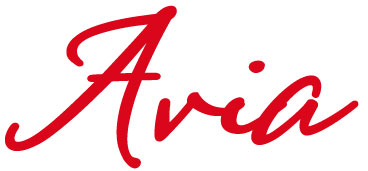
© Copyrighted. All rights reserved.
